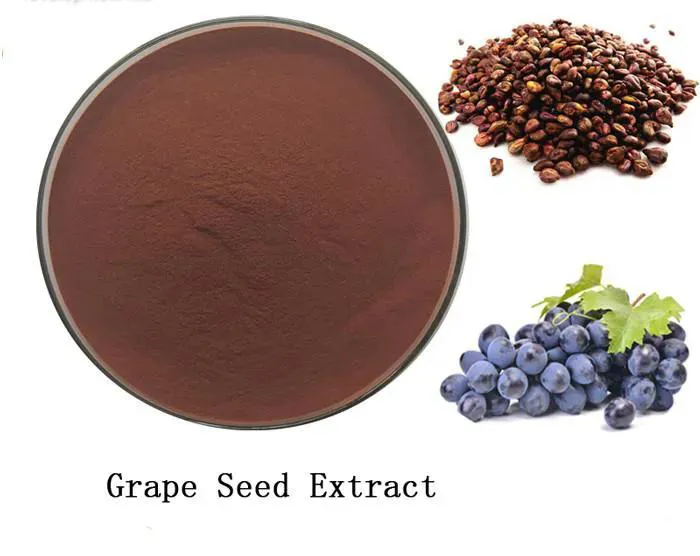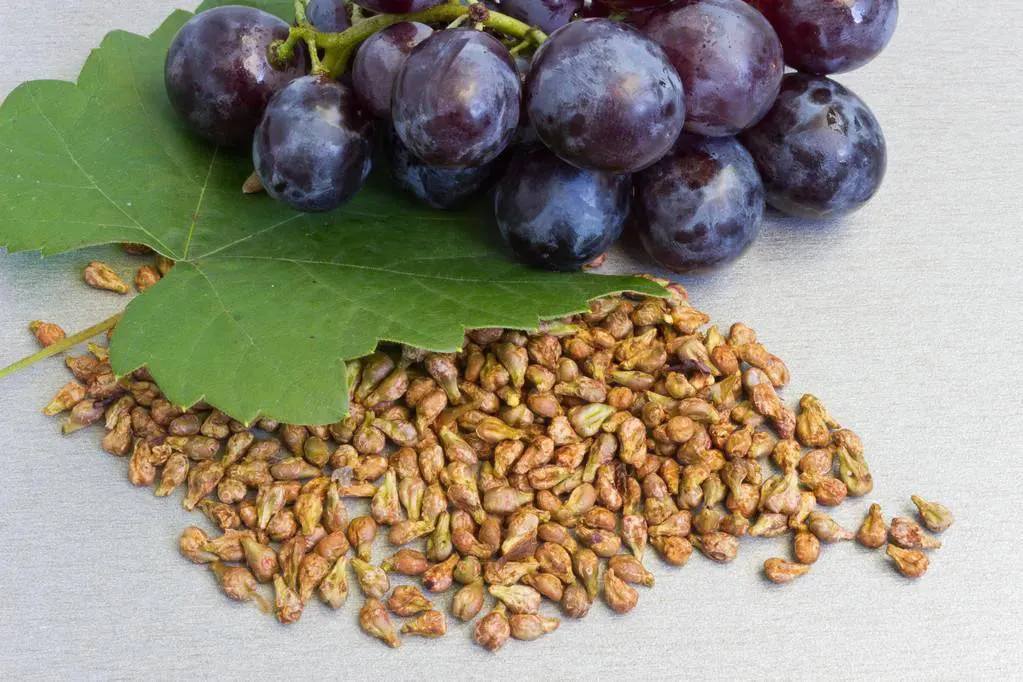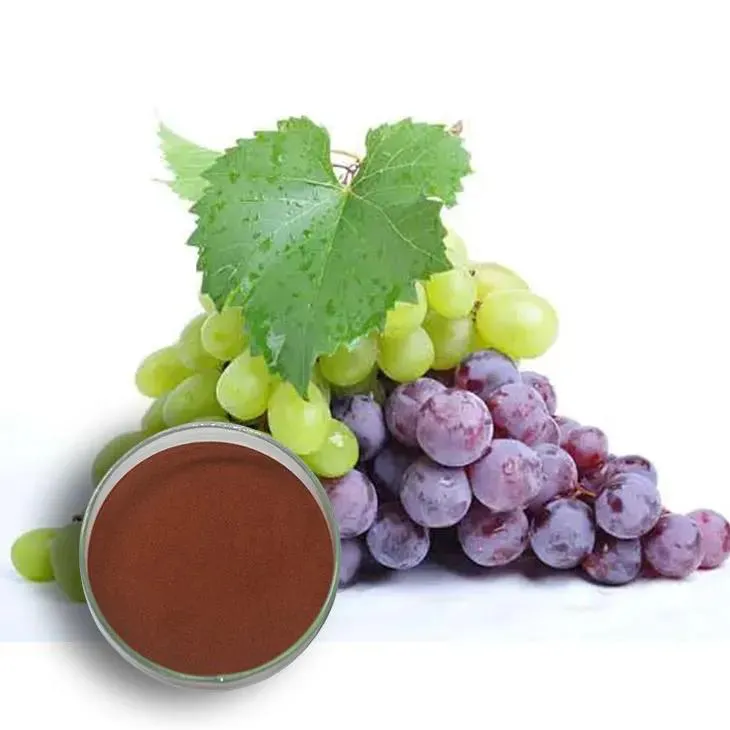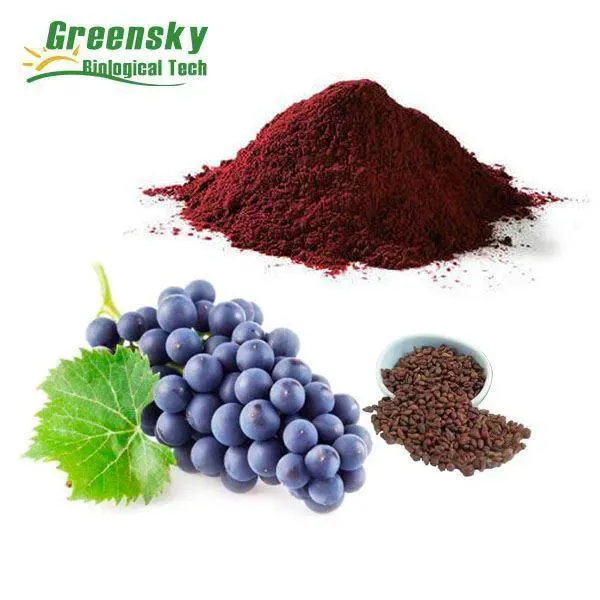- 0086-571-85302990
- sales@greenskybio.com
The Future of Antifungal Treatment: Grape Seed Extract and Beyond
2024-07-23

1. Introduction
Fungal infections pose significant challenges in both medical and agricultural sectors. In medicine, they can range from superficial skin infections to life - threatening systemic diseases, especially in immunocompromised patients. In agriculture, fungal diseases can devastate crops, leading to substantial economic losses. Antifungal treatment is, therefore, of utmost importance. This article aims to explore the future of antifungal treatment, with a particular focus on Grape Seed Extract and other emerging trends.

2. Grape Seed Extract: A Promising Antifungal Agent
2.1 Chemical Composition and Properties
Grape Seed Extract is rich in polyphenols, including proanthocyanidins. These compounds are known for their antioxidant properties, but recent research has also revealed their significant antifungal capabilities. The polyphenols in grape seed extract can disrupt the cell membrane of fungi, interfering with their normal physiological functions. For example, they may prevent the uptake of nutrients or the excretion of waste products by the fungal cells.2.2 In Vitro and In Vivo Studies
- In vitro studies have shown that grape seed extract can inhibit the growth of a wide range of fungal species. These include common pathogenic fungi such as Candida albicans, which is responsible for many yeast infections in humans. The extract has been found to be effective at relatively low concentrations, indicating its potential potency as an antifungal agent.
- In vivo studies have also yielded promising results. In animal models of fungal infections, grape seed extract has been shown to reduce the severity of infections and improve the survival rate of the infected animals. For instance, in a study on mice with a systemic Candida infection, treatment with grape seed extract led to a significant decrease in the fungal load in the organs.
2.3 Mechanisms of Action
- One of the main mechanisms by which grape seed extract exerts its antifungal effect is through its ability to interact with the fungal cell wall. It can bind to components of the cell wall, such as chitin and beta - glucan, weakening the structure and making the cell more vulnerable to other stressors.
- Additionally, grape seed extract can also modulate the host immune response. It has been shown to enhance the activity of immune cells, such as macrophages and neutrophils, which play a crucial role in fighting fungal infections. By activating these immune cells, the extract can help the host's body to better combat the invading fungi.

3. Challenges and Limitations of Grape Seed Extract in Antifungal Treatment
3.1 Bioavailability
One of the major challenges associated with using grape seed extract for antifungal treatment is its relatively low bioavailability. After oral administration, only a small fraction of the active compounds in the extract are absorbed into the bloodstream. This means that a relatively large dose may be required to achieve the desired antifungal effect, which could potentially lead to adverse effects.3.2 Standardization
There is currently a lack of standardization in the production of grape seed extract. Different manufacturers may use different extraction methods and source materials, resulting in products with varying compositions and potencies. This lack of standardization makes it difficult to accurately determine the appropriate dose and to compare the results of different studies.3.3 Resistance Development
Although there is currently no evidence of significant resistance development against grape seed extract in fungi, it is a potential concern. As with any antifungal agent, continuous and widespread use could potentially lead to the emergence of resistant fungal strains over time.
4. Emerging Technologies in Antifungal Treatment
4.1 Nanotechnology - Based Antifungal Therapies
- Nanotechnology offers new possibilities for antifungal treatment. Nanoparticles can be designed to deliver antifungal drugs more effectively. For example, they can be engineered to target fungal cells specifically, reducing the exposure of healthy cells to the drugs. This targeted delivery can improve the efficacy of the treatment while minimizing side effects.
- Some nanoparticles also have inherent antifungal properties. Silver nanoparticles, for instance, have been shown to have potent antifungal activity against a variety of fungal species. They can disrupt the fungal cell membrane and inhibit key metabolic processes within the cell.
4.2 Gene - Editing Technologies
- Gene - editing technologies such as CRISPR - Cas9 hold promise for developing new antifungal strategies. These technologies can be used to study the genes involved in fungal virulence and drug resistance. By understanding these genes, researchers can develop drugs that target specific molecular pathways in fungi, making it more difficult for the fungi to develop resistance.
- Gene - editing can also be used to engineer plants with enhanced resistance to fungal diseases. For example, by editing the genes responsible for plant defense mechanisms, scientists can create crops that are more resistant to common fungal pathogens, reducing the need for chemical fungicides in agriculture.

5. Novel Drug Development in Antifungal Treatment
5.1 Identification of New Targets
- To develop more effective antifungal drugs, researchers are constantly looking for new targets within the fungal cell. One such target is the fungal proteasome. Inhibiting the proteasome can disrupt the normal protein degradation process in fungi, leading to cell death. Drugs that target the fungal proteasome are currently in development and show great potential.
- Another potential target is the fungal cell's lipid metabolism. Manipulating the lipid synthesis or degradation pathways in fungi can affect their growth and survival. By targeting these pathways, new antifungal drugs may be developed that are more effective against resistant fungal strains.
5.2 Combination Therapies
- Combination therapies are emerging as a promising approach in antifungal treatment. Combining two or more antifungal drugs with different mechanisms of action can enhance their efficacy and reduce the risk of resistance development. For example, a combination of an azole - based drug and an echinocandin - based drug has been shown to be more effective against some resistant Candida strains than either drug alone.
- In addition to combining traditional drugs, the combination of drugs with natural products such as grape seed extract is also being explored. This approach could potentially harness the unique properties of both types of agents to create more effective antifungal treatments.
6. Natural Alternatives to Conventional Antifungal Agents
6.1 Essential Oils
- Essential oils have long been known for their antimicrobial properties, including antifungal activity. Tea tree oil, for example, is a popular natural antifungal agent. It contains compounds such as terpinen - 4 - ol, which can disrupt the fungal cell membrane. Essential oils from other plants, such as oregano and thyme, also show significant antifungal activity and are being investigated for potential use in antifungal treatment.
- However, like grape seed extract, essential oils also face challenges such as low bioavailability and potential toxicity at high concentrations. Therefore, research is focused on finding ways to improve their delivery and safety for use in antifungal treatment.
6.2 Probiotics
- Probiotics are live microorganisms that can confer health benefits when consumed in adequate amounts. Some probiotic strains have been shown to have antifungal properties. For example, certain strains of lactobacilli can produce antimicrobial substances that inhibit the growth of fungi. In addition, probiotics can also modulate the host's immune system, enhancing its ability to fight off fungal infections.
- The use of probiotics in antifungal treatment is still in its early stages, and more research is needed to determine the most effective strains, dosages, and treatment regimens. However, they offer a potentially safe and natural alternative to conventional antifungal agents.
7. Conclusion
The future of antifungal treatment holds great promise with the exploration of grape seed extract and other emerging trends. Grape seed extract has shown potential as an antifungal agent, but challenges such as bioavailability and standardization need to be addressed. Emerging technologies such as nanotechnology and gene - editing offer new avenues for developing more effective antifungal therapies. Novel drug development, including the identification of new targets and combination therapies, is also crucial. Additionally, natural alternatives such as essential oils and probiotics provide potential options for those seeking more natural or complementary approaches to antifungal treatment. Overall, a multi - faceted approach that combines different strategies will likely be the key to effectively combatting fungal infections in the future.
FAQ:
What are the main antifungal properties of grape seed extract?
Grape seed extract contains various compounds such as proanthocyanidins. These compounds have been shown to possess antifungal properties. They can disrupt the cell membrane of fungi, interfere with their metabolic processes, and inhibit their growth and reproduction.
How could grape seed extract revolutionize antifungal treatment?
Grape seed extract may revolutionize antifungal treatment in several ways. Firstly, it is a natural product, which may have fewer side effects compared to some synthetic antifungal drugs. Secondly, it could potentially be used in combination with existing antifungal therapies to enhance their efficacy. Additionally, it may offer a new approach for treating fungal infections that are resistant to current drugs.
What are the emerging technologies in antifungal treatment?
Some emerging technologies in antifungal treatment include the use of nanotechnology to deliver antifungal agents more effectively. Gene - editing technologies like CRISPR - Cas9 may also be explored to target specific genes in fungi to disrupt their growth. Another area is the development of smart drug - delivery systems that can respond to the presence of fungi and release antifungal drugs accordingly.
What are the potential natural alternatives to current antifungal treatments?
Besides grape seed extract, there are other potential natural alternatives. For example, essential oils from plants like tea tree oil have shown antifungal activity. Also, some fungi - fighting peptides from natural sources are being investigated. Certain types of probiotics can also help in maintaining a balance in the microbiome, which may indirectly combat fungal overgrowth.
How can research in antifungal treatment balance between novel drug development and natural alternatives?
Research can balance between novel drug development and natural alternatives by integrating both approaches. Scientists can study the mechanisms of action of natural alternatives like grape seed extract to find new targets for drug development. At the same time, novel drug development can learn from the safety and efficacy profiles of natural products. Collaborative research efforts between different fields such as pharmacology, botany, and microbiology can help in achieving this balance.
Related literature
- Antifungal Properties of Grape Seed Extract: A Review"
- "Emerging Technologies in Antifungal Therapy"
- "Natural Alternatives to Synthetic Antifungal Drugs"
- ▶ Hesperidin
- ▶ citrus bioflavonoids
- ▶ plant extract
- ▶ lycopene
- ▶ Diosmin
- ▶ Grape seed extract
- ▶ Sea buckthorn Juice Powder
- ▶ Beetroot powder
- ▶ Hops Extract
- ▶ Artichoke Extract
- ▶ Reishi mushroom extract
- ▶ Astaxanthin
- ▶ Green Tea Extract
- ▶ Curcumin Extract
- ▶ Horse Chestnut Extract
- ▶ Other Problems
- ▶ Boswellia Serrata Extract
- ▶ Resveratrol Extract
- ▶ Marigold Extract
- ▶ Grape Leaf Extract
- ▶ blog3
- ▶ blog4
- ▶ blog5
-
Bamboo Leaf extract
2024-07-23
-
Pomegranate Extract
2024-07-23
-
Panax Ginseng Leaf Extract
2024-07-23
-
Nettle Root Extract
2024-07-23
-
Oyster Mushroom Extract Powder
2024-07-23
-
Shikonin
2024-07-23
-
Polygonum multiflorum extract
2024-07-23
-
Medicinal Marshmallow Extract
2024-07-23
-
Black Garlic Extract
2024-07-23
-
Saffron Extract Powder
2024-07-23





















